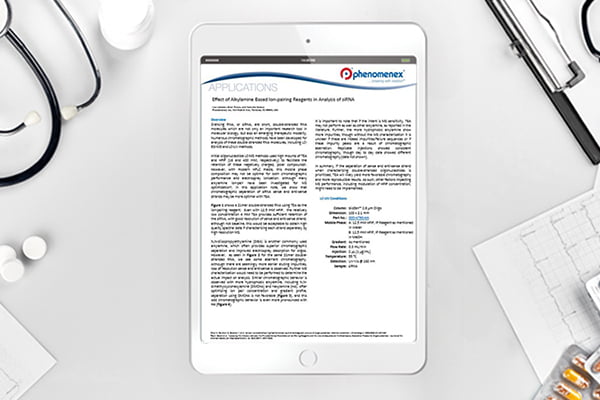Application note: Effect of alkylamine based Ion-pairing reagents in analysis of siRNA
Posted: 7 August 2020 | Phenomenex | No comments yet
Silencing RNA, or siRNA, are short, double-stranded RNA molecules which are not only an important research tool in molecular biology, but also an emerging therapeutic modality.
Numerous chromatographic methods have been developed for analysis of these double stranded RNA molecules, including LCESI-MSandLC-UVmethods. Initial oligonucleotide LC-MS methods used high mounts of TEA and HFIP (16 and 400 mM, respectively) to facilitate the retention of these negatively charged, polar compounds.1 However, with modern HPLC media, this mobile phase composition may not be optimal for both chromatographic performance and electrospray ionization. Although many alkylamine ion-pair have been investigated for MS optimisation,2 in this application note, we show that chromatographic separation of siRNA sense and anti-sense strands maybe more optimal with TEA.
Related content from this organisation
- Application note: The effect of column hardware on the analysis of synthetic oligonucleotides by LC-MS
- Application note: Effect of temperature on single stranded oligonucleotide analysis
- Application note: Effect of perfluorinated alcohols in impurity analysis for synthetic oligonucleotides
- Application note: Effect of alkylamine based Ion-pairing reagents in analysis of siRNA
- Application note: Comparison of fully porous and superficially porous particles for the analysis of synthetic oligonucleotides
Related topics
Analysis, Analytical techniques, Biopharmaceuticals, Disease research, Gene testing, Genetic analysis, Genome editing, Genomics, Mass Spectrometry, Personalised Medicine
Related organisations
Phenomenex





